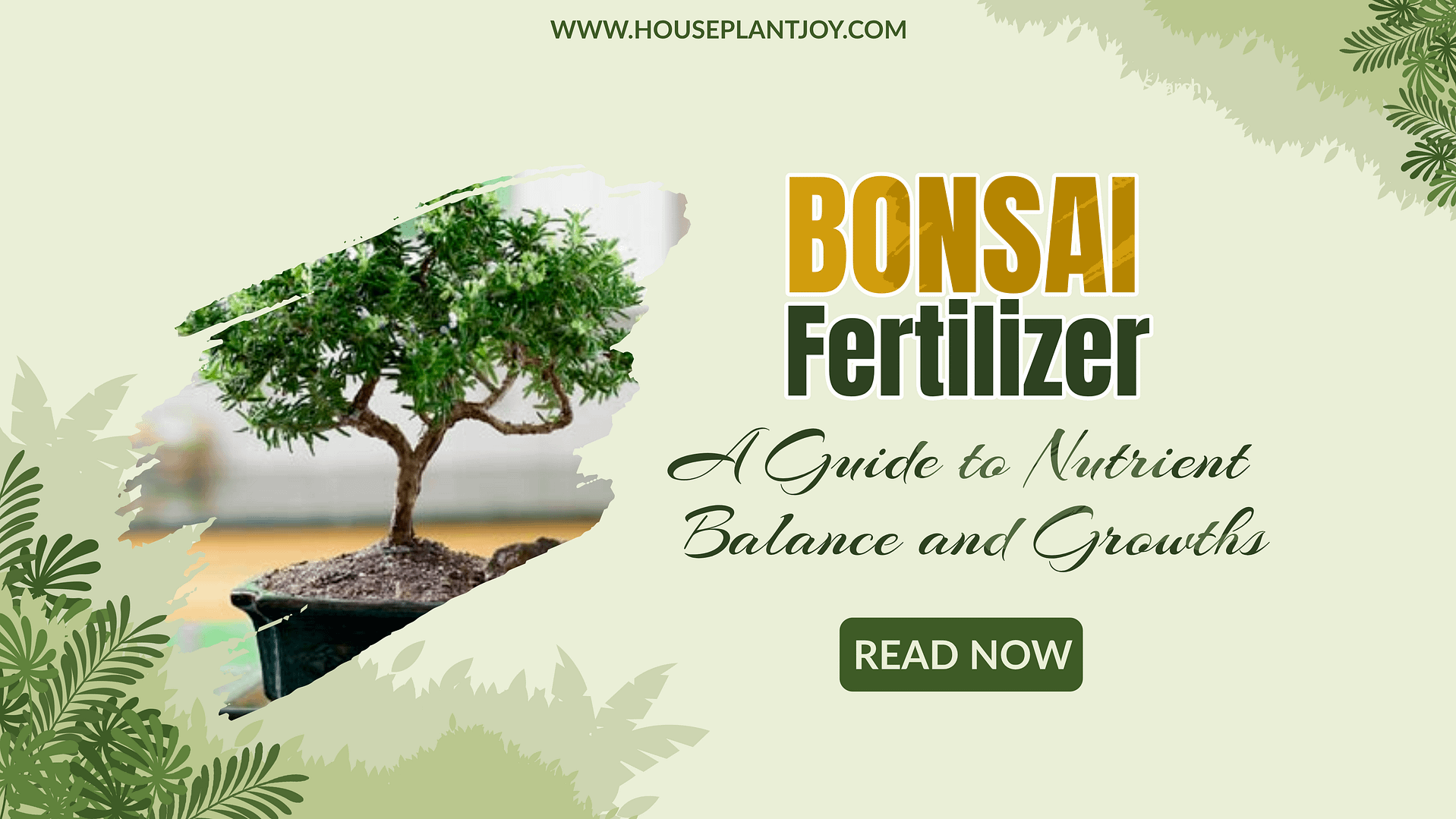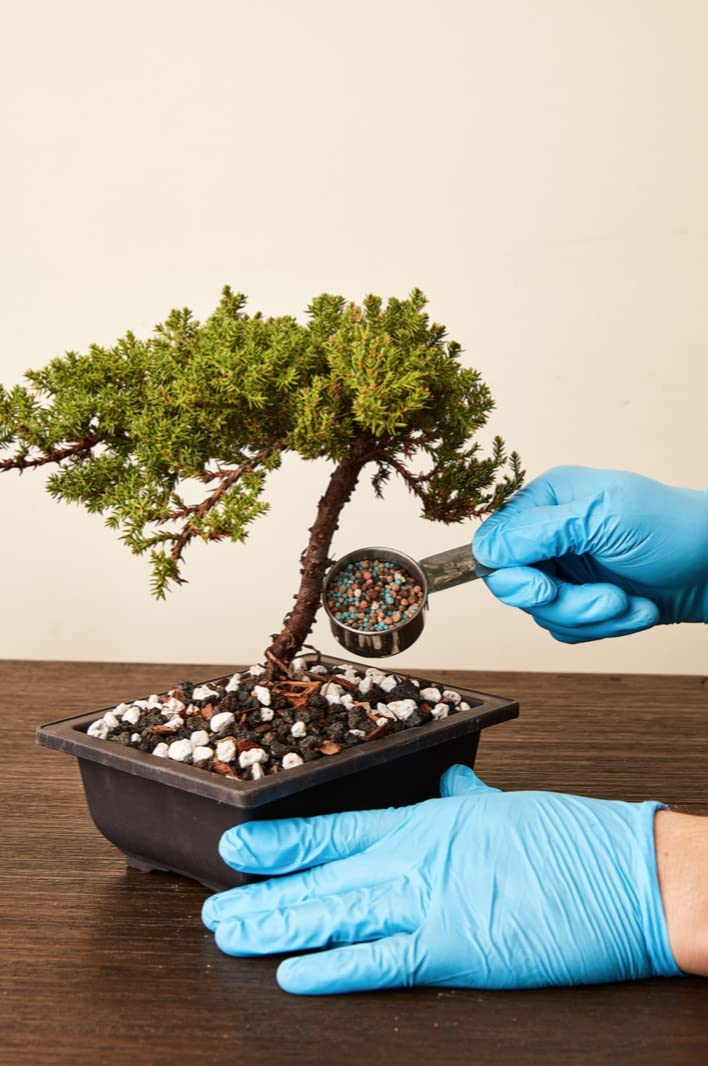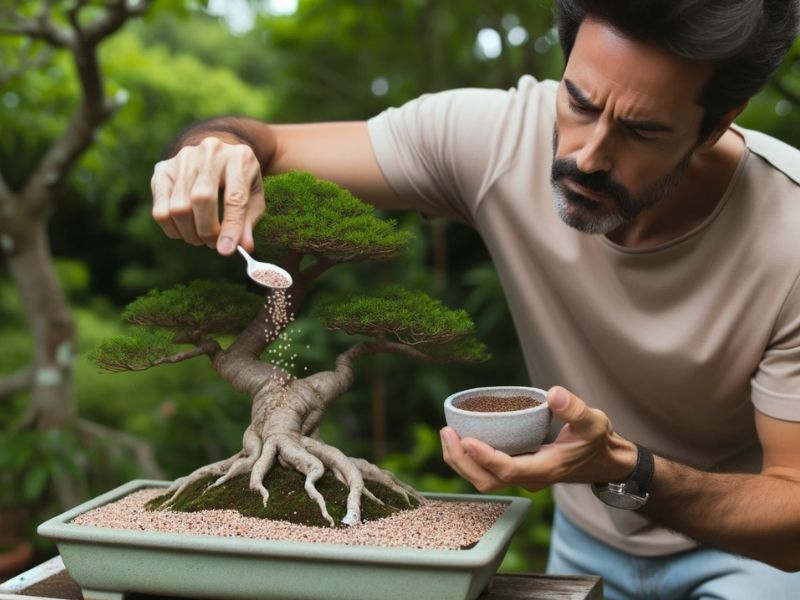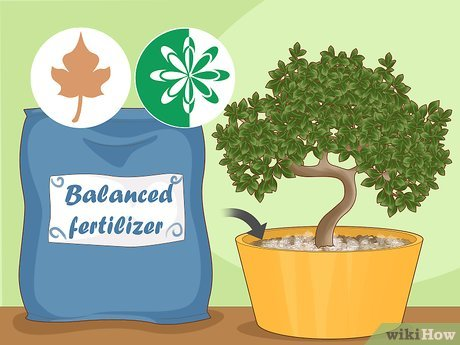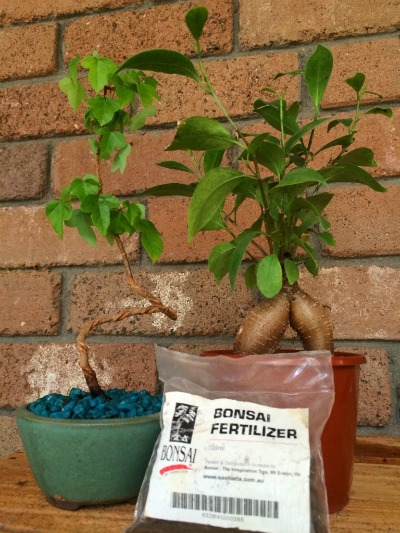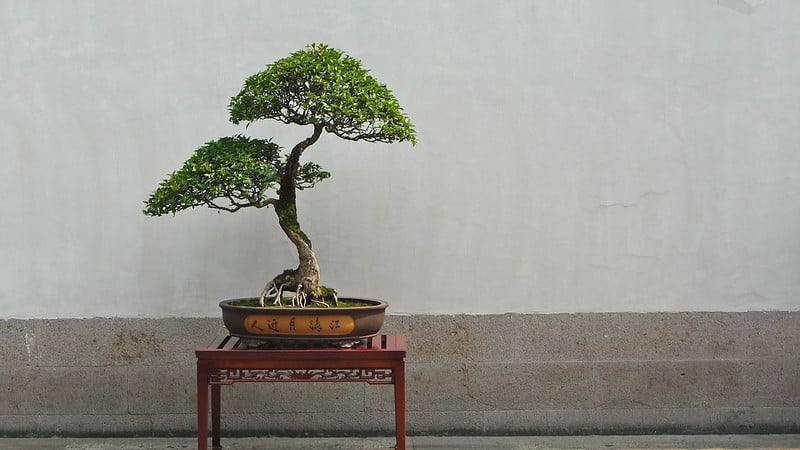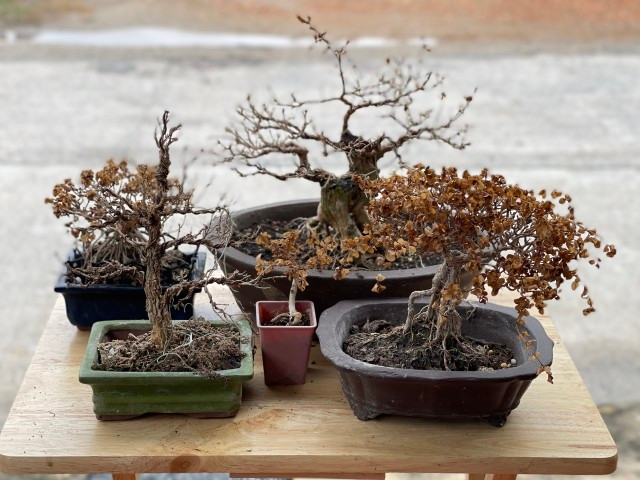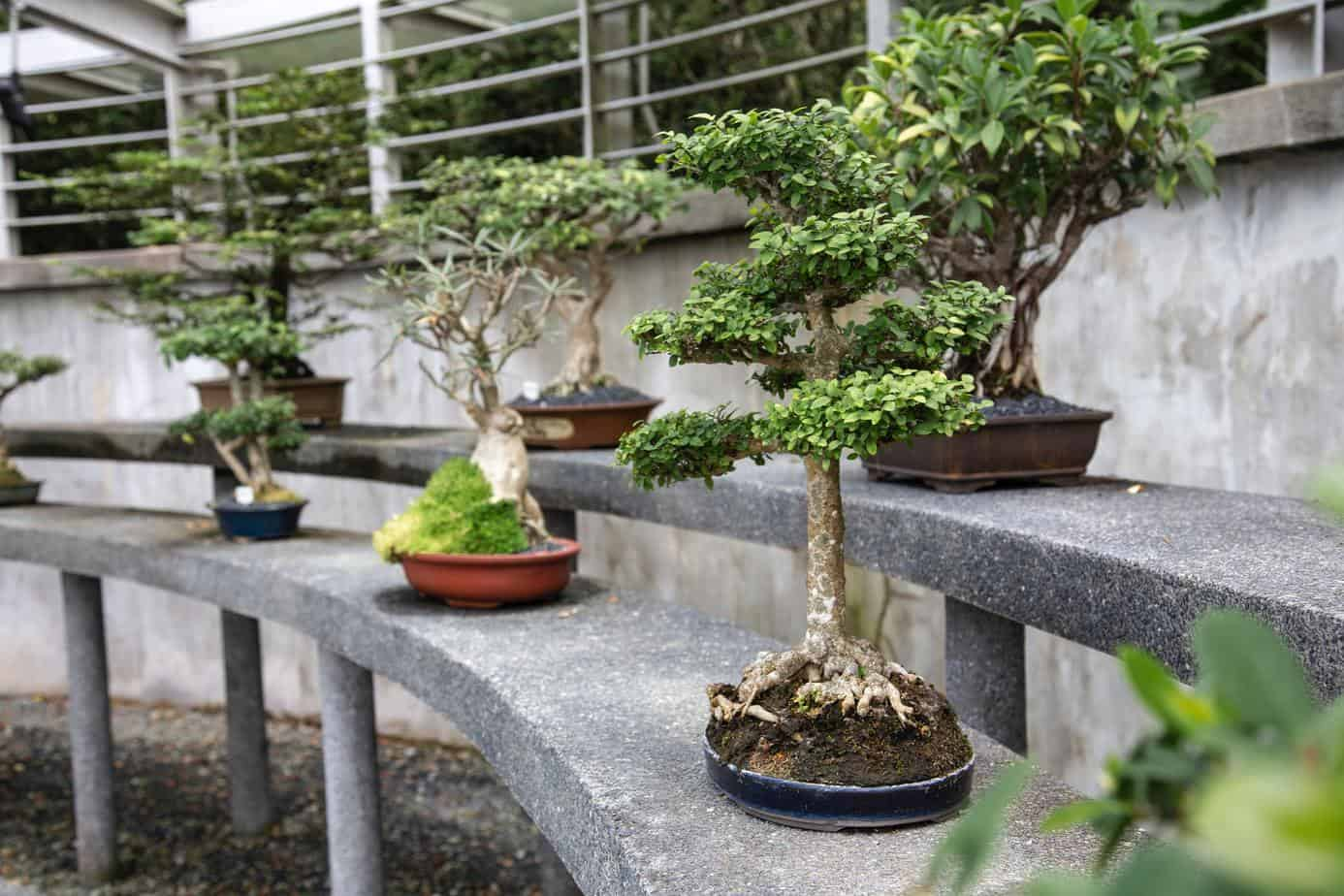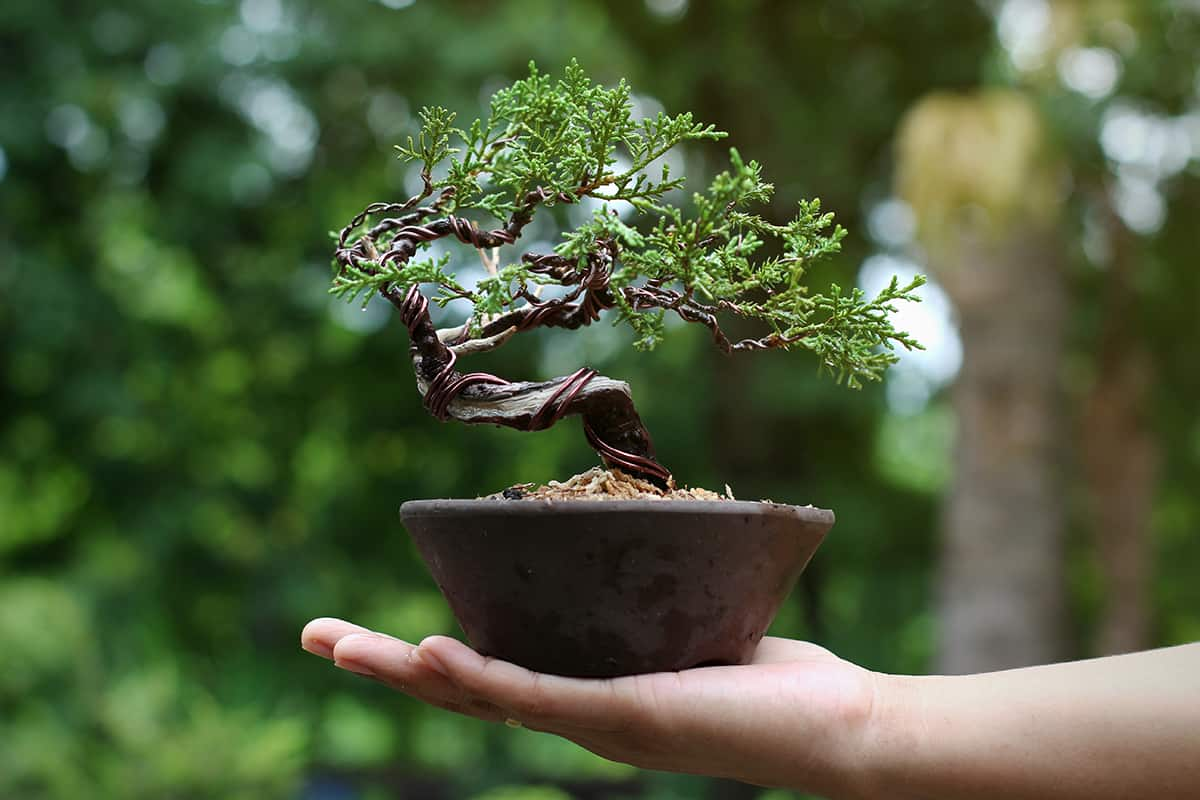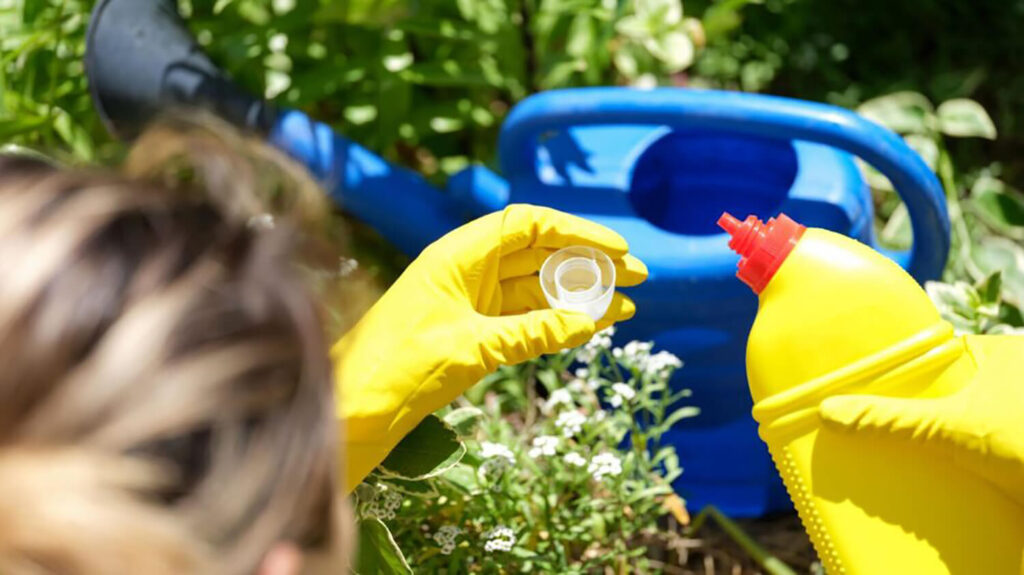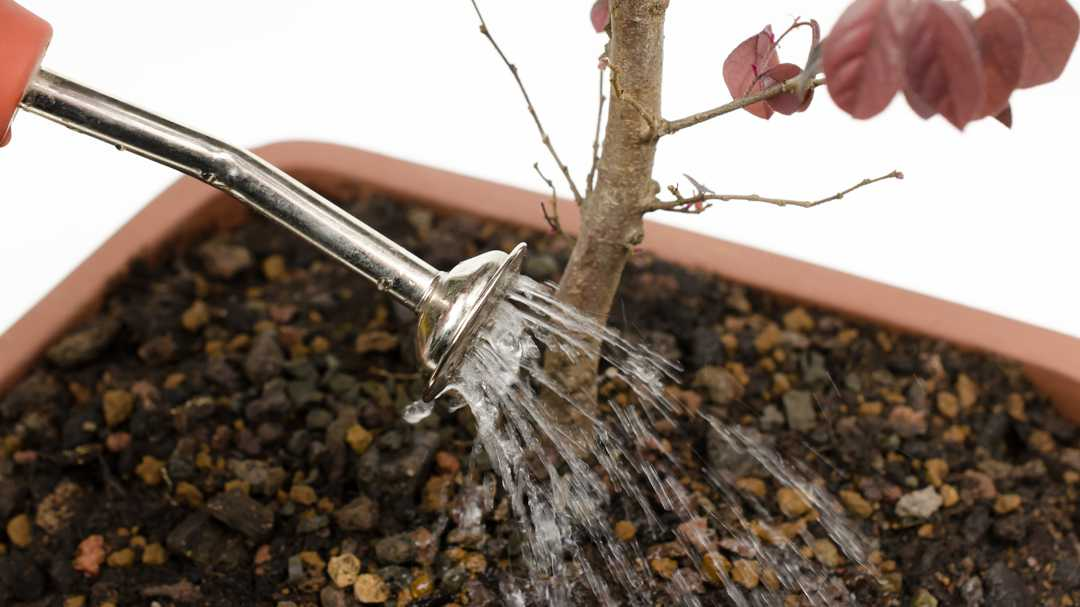HousePlantJoy is supported by our audience. When you purchase through one of our links, we may earn a small affiliate commission. As an Amazon Associate I earn from qualifying purchases. Your cost is not affected.
==================
Hey there, fellow bonsai enthusiasts! Have you ever wondered how to give your miniature masterpieces the love and care they truly deserve? Well, look no further! Today, we’re diving into the fascinating world of bonsai fertilizers – the secret sauce behind those lush, thriving tiny trees. Join me as we explore the art of choosing the best bonsai fertilizer for your little green companions, ensuring they grow beautifully, healthy, and vibrant. Let’s nurture those tiny wonders together!
The Essential Wonders of Bonsai Tree Fertilization
Photo by: Bonsai Supply
Fertilizing bonsai trees is like giving your bonsai tree the necessary plant food, rich in vitamins and minerals, that it needs to thrive. Just like us humans that need a well-rounded diet for good health, bonsai trees also need various nutrients to grow, develop, and stay in top form.
When you provide the right fertilizers, you ensure your bonsai gets the fuel it needs to flourish. This plant food helps promote growth, develop healthy leaves, and strengthen the overall immune system of the tree. So, bonsai fertilizer isn’t just a good practice; it’s a recipe for a healthy bonsai tree packed with more nutrients and a happy, vibrant little tree!
Benefits of Fertilizing Your Bonsai Tree
Photo by: Hooked on Bonsai
Think of fertilizing your bonsai tree with a well-balanced diet, which is essential for its growth and healthy development! Here’s why applying bonsai fertilizer is crucial for your bonsai:
Promoting Healthy Growth
Fertilizers are powerful boosts for bonsai trees, supplying them with vital nutrients that enhance their healthy growth. Picture it as the nourishment that fuels them to grow robust and vibrant, even within their confined pots.
Lush, Green Foliage
One of the basic components in bonsai fertilizer is Nitrogen. It stimulates your bonsai tree to sprout lush green foliage, creating a vibrant and lively appearance.
Bountiful Blooms
For flowering bonsai varieties, fertilizers work wonders! They contain phosphorus, a secret ingredient that prompts your bonsai to bloom with various flowers. Imagine your tree adorned with beautiful blossoms—truly a sight to behold!
Ensuring Healthy Root Growth
Proper fertilization supports the development of healthy roots, the foundation of all trees. A well-fed bonsai nurtures strong, robust roots, ensuring the tree’s overall health.
Boosting Plant Health
Fertilizers provide diverse nutrients, fortifying your bonsai’s immune system against diseases and pests. Like vitamins for humans, these nutrients boost your bonsai’s defenses, enabling it to face various challenges with resilience.
So, there you have it! Fertilizing your bonsai isn’t merely about feeding it; it’s about nurturing its strong growth, promoting healthy root growth, ensuring plant health, and enhancing its overall vitality.
Elevate your Bonsai game with Gardenera’s Organic Liquid Kelp Spray! This precision nutrition superfood has transformed my trees, enhancing growth and shaping their beauty. Easy application, made in the USA excellence, and the natural power of kelp—my Bonsai are thriving as living art! #BonsaiBliss #GardeneraMagic #Ads #CommissionsEarned
Choosing the Right Types of Fertilizer for Your Bonsai Tree
Photo by: wikiHow
When diving into bonsai gardening, finding the best bonsai fertilizer is key to your tree’s success. You’ve got two main contenders: organic and inorganic fertilizers.
Organic Fertilizers
Think of these as the natural sources MVP from plant and animal waste. They’re like a gourmet meal for your bonsai because they release nutrients gradually, ensuring your tree gets a steady, reliable diet. This slow release reduces the risk of root damage and does wonders for your bonsai’s soil structure and drainage. It’s like giving your tree a healthy, home-cooked meal straight from nature’s pantry.
Inorganic Fertilizers
Now, if your bonsai needs a quick pick-me-up, inorganic fertilizers are the superheroes of the gardening world. They’re concentrated and pack a punch, delivering nutrients swiftly. This rapid release can be a game-changer for stressed-out or sickly trees, providing an instant energy boost to revitalize their growth. It’s like a shot of espresso for your bonsai, giving it the energy it needs to thrive.
Bonsai-Friendly Organic and Inorganic Fertilizer Examples
Organic Fertilizers
- Compost: Picture this as the all-purpose superhero for your bonsai. It’s made from decaying plants and animals, packed with nutrients that your tree loves.
- Manure: Another natural gem, but here’s the trick – go for the aged stuff. Fresh manure can be too intense and might not sit well with your bonsai’s roots.
- Fish Emulsion: Have you ever heard of fish waste working wonders? That’s what this liquid concentrate fertilizer is all about. It’s like a fishy potion full of Nitrogen and phosphorus, perfect for boosting your bonsai.
Inorganic Fertilizers
- NPK 20-20-20: This one’s like a balanced meal for your bonsai, with equal parts of Nitrogen, phosphorus, and potassium. It’s a great choice for most bonsai trees, ensuring they get the necessary nutrients.
- NPK 10-6-6: This fertilizer leans a bit more into the nitrogen side, making it excellent for bonsai trees that love to show off their flowers. Think of it as a boost for blooming beauties.
- NPK 6-10-6: This one focuses on phosphorus, ideal for encouraging those roots to grow deep and strong. Perfect for giving your bonsai’s foundation the attention it deserves.
What Does NPK Mean in Bonsai Fertilizer?
Photo by: The Links Site
Have you ever wondered what those mysterious three-digit numbers on bonsai fertilizer packaging mean? Well, they’re called NPK, which stands for Nitrogen (N), phosphorus (P), and potassium (K). These numbers represent the ratio of these essential nutrients in the fertilizer, and they come in various combinations, creating different NPK ratios.
So, when you see something like 10-20-10 on the packaging, the fertilizer contains 10% nitrogen, 20% phosphorus, and 10% potassium.
Why does this matter? Well, these nutrients are vital for your bonsai’s health. Understanding the balance of macronutrients like different NPK ratios is critical to successful bonsai gardening. Let’s dive deeper into why these elements are essential for your little trees!
Nitrogen
Nitrogen plays a vital role in making your tree grow tall and lush, acting like a magic potion that actively promotes the expansion of new growth. It’s the driving force behind helping your bonsai flourish above the ground.
You know those beautiful, vibrant leaves and stems that your bonsai displays during its active growth phase? Well, thank Nitrogen for that! It’s the reason behind their size and that lovely green color. The more Nitrogen your bonsai gets, the greener and healthier those actively growing shoots will be.
But that’s not all! Nitrogen is also a key player in the bonsai world because it actively assists in photosynthesis, letting plants make food from sunlight. Plus, it helps your plant store and use energy effectively, keeping it strong and thriving during its active growth phase. So, next time you see your bonsai looking all green and lively while actively growing, you can thank Nitrogen for its incredible work!
Phosphorus (P)
Let’s talk about phosphorus, another fantastic nutrient that your bonsai loves, especially when it comes to its roots. Phosphorus is the secret ingredient for healthy root growth, giving your bonsai a strong and sturdy foundation to stand tall and proud. But that’s not all! Phosphorus contributes to more than just root health. It’s the reason behind those beautiful flowers and fruits that your bonsai proudly displays. So, if you want your fruit-bearing and flowering bonsai trees to shine, phosphorus is your best friend.
Potassium (K)
Let’s chat about potassium, the nutrient like a superhero for your bonsai tree’s well-being! Potassium is a critical player in ensuring your tree is in top-notch condition. It does wonders for the tree, shaping its size, making it look fantastic, and enhancing its vibrant colors.
But that’s not all! Potassium is like the manager of your tree’s photosynthesis process. It’s in charge of opening and closing the stomata, the tiny pores on the leaves, ensuring your bonsai can breathe and soak in sunlight effectively.
So, if you want your bonsai to thrive and grow to its full potential, a potassium-rich fertilizer is your go-to friend. It’s like giving your tree a power-packed boost for overall health and growth, making it the best it can be!
Guides for Fertilizing Your Bonsai Trees
Photo by: Potted Exotics
Fertilizing your bonsai plants might seem like a puzzle, and guess what? You’re not alone! There isn’t a one-size-fits-all approach, making it a bit tricky, especially because the best methods can vary depending on the time of year, the type of bonsai tree you have, the quality of your soil, how old your tree is, and the kind of fertilizer you’re using, including its NPK ratio.
But don’t worry! We’ve got you covered with a comprehensive guide considering all these factors.
When Should You Fertilize Your Bonsai?
Photo by: Bonsai Tonight
Let’s delve into the perfect timing for giving a bonsai fertilizer to your bonsai trees.
During the Active Growing Season
Ah, the glorious spring through fall period – the bonsai’s time to shine! As it eagerly stretches its branches and basks in the sunlight, this is when your tree craves those nutrients the most. It’s like serving up a feast during a celebration!
When Your Tree Gets a New Pot
Repotting can be a stressful affair, even for our resilient bonsai friends. Picture fertilizer as the supportive companion, helping your tree grow new roots and settle comfortably into its fresh abode. It’s like a warm welcome to a new home!
When Your Tree is Bouncing Back From Stress
Life can get tough for bonsai, too – pests, diseases, or sudden environmental changes can throw them off balance. Extra nourishment is a healing touch, aiding your tree’s recovery journey. It’s like a revitalizing boost after a challenging period!
When Not to Fertilize Bonsai?
Photo by: Bonsai Sanctum
During the Dormant Season
Winter is the season of rest. Your bonsai takes a breather, slowing down its activities and conserving energy. During this time, it doesn’t crave the nutrients as much. Think of it as a well-deserved break – a time to relax and rejuvenate.
When Your Tree is Feeling Under the Weather
Fertilizing a sick or stressed tree is like offering a feast to someone with a stomach ache – not helpful. It might make things worse. Instead, focus on providing the right care and attention until your bonsai is back on its feet.
Right After Repotting
Imagine your bonsai as a newcomer in a neighborhood. It needs time to settle in, explore its surroundings, and find its groove. After repotting, wait a few weeks before introducing them to bonsai fertilizer. This break allows the roots to recover, ensuring a smoother transition into their new soil home.
Fertilizing Bonsai: Tailoring to Tree Species
Photo by: Plantly
Let’s talk about when to feed our little tree friends based on their types. For those charming coniferous trees like Juniper and Hinoki Cypress, the best time to sprinkle some fertilizer magic is during the growing season, which stretches from early spring to mid-autumn. That’s when these evergreen beauties are at their busiest, soaking up the sunshine and growing like there’s no tomorrow.
Now, regarding our lovely broadleaf and deciduous bonsai trees, such as the Maple, here’s the scoop: you’ll want to start giving them a bonsai fertilizer in late spring, right after the first leaves toughen up a bit. Keep the nutrients flowing until late autumn, ensuring they get all the love they need during active growth.
Fertilizing Bonsai: Growth Stage Guidelines
Photo by: MorningChores
During the early development phase, when our delicate bonsai trees are just starting their journey, it’s crucial to prioritize their health and promote balanced growth. So, don’t be shy with the fertilizer – give them that extra boost they need! Choose a bonsai fertilizer with higher nitrogen content, providing your little tree with a turbocharge, encouraging it to grow fast and strong, and fostering healthy trees from the beginning.
As our bonsai friends transition into the late development stage, the focus remains on nurturing balanced growth. We still want them to thrive but in a well-rounded and harmonious manner. So, adjust the fertilizer slightly, ensuring it’s not too much but just enough to maintain a balanced pace. Seek out a bonsai fertilizer with a well-balanced NPK ratio. It’s like offering your bonsai a nutritious, balanced diet – ensuring they continue to grow steadily and gracefully, maintaining their delicate beauty.
How Often Should I Fertilize My Bonsai?
Photo by: Hooked on Bonsai
Here’s a simple rule of thumb: for most bonsai trees, aim to fertilize them once a week when they’re actively growing, which typically happens from spring through fall. When fall rolls around, you can scale back and fertilize just once a month. However, when winter arrives and your bonsai takes a break, it’s best to hold off on fertilizing altogether.
How Much Fertilizer Should I Use?
Photo by: Bonsai Made Simple
Determining the right amount of fertilizer for your indoor bonsai tree depends on its size, species, and fertilizer type. It’s a good practice to begin with a small quantity and adjust as necessary, gradually increasing it if required. If it’s liquid fertilizer, consider it a refreshing drink – dilute it to half-strength before giving it to your bonsai. Sprinkle those solid fertilizers evenly across the soil surface and gently water them. Don’t forget, regardless of the type you go for, follow the instructions on the fertilizer label. This way, your bonsai will receive the perfect amount of nutrients it requires.
Here’s an information video about on how to Fertilize a Bonsai Tree
How to Fertilize a Bonsai Tree – One Easy Method By: TheBonsaiJungle
Again, witness a Bonsai transformation courtesy of Gardenera’s Organic Liquid Kelp Spray! This botanical elixir is reshaping my trees, promoting growth and crafting their intrinsic beauty. With a seamless application process, a touch of American-made brilliance, and the inherent vitality of kelp—my Bonsai are evolving into living masterpieces! #BonsaiJourney #GardeneraTransformation #Ad #CommissionsEarned
A Fertilization Journey to Thriving Miniature Masterpieces
Bonsai fertilization is the secret ingredient for nurturing your miniature masterpieces into vibrant, healthy, and flourishing little trees. Think of it as providing essential plant food that fuels your bonsai’s growth and vitality.
Fertilizing your bonsai promotes healthy growth, resulting in lush, green foliage and bountiful blooms for flowering varieties. It’s the key to ensuring robust root growth and overall plant health. Bonsai fertilizers fortify your tree’s immune system, helping it face various challenges with resilience. In this journey of bonsai fertilizer, understanding the language of fertilization ensures your tiny wonders receive the VIP treatment they truly deserve. So, go ahead and nurture your bonsai with the right fertilizer, and watch them grow, flourish, and enchant with their timeless beauty. Happy bonsai gardening!
FAQs
What Are Synthetic Fertilizers?
Synthetic fertilizers are chemically designed to contain essential plant nutrients. They are made from minerals and chemicals, including ammonia, natural gas, atmospheric Nitrogen, phosphate minerals, and sulfur. Synthetic fertilizers are fast-acting and can provide plants with a quick boost of nutrients.
How Do You Feed an Indoor Bonsai Tree?
To feed an indoor bonsai tree, follow these steps:
- Pick the Right Fertilizer: Choose a balanced bonsai fertilizer (NPK) from a garden store.
- Dilute It: Mix the fertilizer per the instructions, usually to half-strength.
- Water First: Before applying fertilizer, water your bonsai well to protect its roots.
- Apply Evenly: Spread the diluted fertilizer evenly on the soil surface. Don’t overdo it!
- Water Again: After fertilizing, give your bonsai another watering round to help spread nutrients.
?? Houseplant Lovers Unite! ??
Welcome to the HouseplantJoy blog, your ultimate destination to dive into the captivating world of houseplants and gardening tips. Whether you’re a plant enthusiast or just starting your green journey, our Facebook page is here to nurture your passion for leafy and lush.
? Hey there, green thumbs and plant enthusiasts! Are you looking to add a touch of nature to your life? ?? Look no further than Houseplant Joy! ??
?? Let’s grow together! Follow us on Facebook, Instagram, and Twitter to embark on an exciting journey of houseplant bliss. ??
Facebook: Dive into the world of houseplants and tips at facebook.com/houseplantjoyblog. ??
Instagram: Immerse yourself in a visual feast of stunning houseplant inspiration at instagram.com/houseplantjoy20. ??
Twitter: Stay in the loop with our green community and stay updated on the latest trends in the houseplant world at twitter.com/HouseplantJoy. ??
Stay in the loop with the Houseplant Joy community on Twitter, your go-to source for all things houseplants and gardening trends. We are your green companions on this exciting journey, keeping you updated on the latest happenings in the ever-evolving world of indoor greenery.
? Why Should You Join Us? ?
? Get insider secrets: Unearth the best-kept secrets to keep your plants thriving and blooming like never before. ??
? Expert advice: Gain access to our team on Facebook, Twitter, and other social media channels, and meet our gardening experts eager to help you on your plant journey. ???
? Engage with like-minded souls: Connect with fellow plant lovers, exchange stories, and build a supportive community. ??
?? Join us today! Follow Houseplant Joy on Facebook, Instagram, and Twitter for daily inspiration and a blooming good time! ?? #HouseplantJoy #GreenThumbsUnite #HouseplantLove

